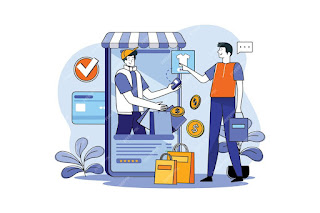Unlocking the Potential of Developing a Peer-to-Peer Network
The creation of a peer-to-peer (P2P) marketplace, which links buyers and sellers and allows for direct transactions without middlemen, is an interesting endeavor.
Understanding the Concept
A P2P marketplace connects individuals or businesses looking to buy or sell goods or services. Think of platforms like Airbnb, Etsy, or Uber—these are all P2P marketplaces facilitating transactions between users.
Key Components
1. Market Research
Begin by identifying your niche and understanding your target audience’s needs. Conduct thorough market research to comprehend existing competition, user behavior, and pain points to address.
2. Platform Design and Functionality
User interface (UI) and user experience (UX) play a pivotal role. A seamless, intuitive design enhances engagement. Consider features like user profiles, secure payment gateways, search functionalities, and a review system to build trust.
3. Security and Trust
Ensuring a secure environment is non-negotiable. Implement robust verification processes, encryption for transactions, and a dispute resolution system to foster trust among users.
4. Payment Integration
Facilitate transactions with secure and convenient payment methods. Integrate various payment gateways while ensuring compliance with financial regulations.
5. Scalability
Plan for future growth and scalability from the outset. Develop a platform that can accommodate increased traffic and user base without compromising performance.
Technical Aspects
1. Choose the Right Technology Stack
Select a technology stack that aligns with your platform’s requirements. Consider factors like scalability, security, and ease of maintenance. Popular choices include Ruby on Rails, Django, or Laravel for backend development and React, Angular, or Vue.js for frontend.
2. Data Management
Effective data management is crucial. Implement databases that handle user information, transactions, and content seamlessly while ensuring data privacy and security.
3. Mobile Responsiveness
Given the increasing use of mobile devices, prioritize a mobile-responsive design. Develop native mobile apps or ensure the website is optimized for mobile use to cater to a broader audience.
Legal and Regulatory Compliance
1. Terms of Service and Privacy Policy
Craft clear and comprehensive terms of service and privacy policies outlining user rights, responsibilities, and data usage. Ensure compliance with regional laws like GDPR, CCPA, etc.
2. Licensing and Regulations
Understand and comply with industry-specific regulations, licenses, and permits required in your target market.
Building the Marketplace
1. Prototype and MVP Development
Start with a prototype to visualize the platform's flow and functionality. Develop a Minimum Viable Product (MVP) with essential features to validate your idea and gather user feedback.
2. Testing and Iteration
Thoroughly test the platform for bugs, security vulnerabilities, and usability issues. Incorporate user feedback to refine and improve the platform continuously.
3. Launch and Marketing
Coordinate a strategic launch plan. Leverage various marketing channels—social media, content marketing, influencer collaborations—to attract both buyers and sellers to the platform.
Post-Launch Strategies
1. Community Building
Foster a community around your platform. Engage users through forums, blogs, or social media to create a sense of belonging and loyalty.
2. Continuous Improvement
Regularly update and enhance the platform based on user feedback, technological advancements, and market trends to stay competitive.
3. Customer Support
Offer excellent customer support to address user queries, concerns, and disputes promptly. A responsive support system enhances user satisfaction.
Conclusion
P2P marketplace development requires careful planning, a thorough comprehension of user needs, a strong technical foundation, and compliance with legal requirements. You can build a successful platform that promotes confidence and enables smooth user transactions by giving user experience, security, scalability, and ongoing development top priority.


Comments
Post a Comment